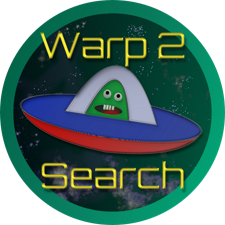Ollama has launched version 0.6.7 of its innovative local-first platform, enabling users to run large language models (LLMs) directly on their desktops without relying on cloud services or accounts. This offers significant benefits in terms of user privacy and data security, appealing to developers, hobbyists, and privacy-conscious individuals.
1. Offline Functionality: Ollama allows users to operate top-tier models like LLaMA 3.3, Phi-4, Mistral, and DeepSeek entirely offline, ensuring that all data processing happens locally on your machine. This results in faster response times and eliminates concerns over data leaks.
2. Cross-Platform Compatibility: Whether you use Windows, macOS, or Linux, Ollama has you covered, making it accessible to a wide range of users.
3. Command Line Interface (CLI): Designed primarily for CLI enthusiasts, Ollama provides a robust command-line interface that allows for smooth and scriptable interactions. Users can easily customize models using Modelfiles, import different model formats, and script batch outputs.
4. Developer-Friendly: Ollama includes libraries for Python (ollama-python) and JavaScript (ollama-js), enabling seamless integration with applications. This makes it ideal for developers looking to build tools or test prompts.
5. Customization Options: Users can define system instructions, set default prompts, and create specialized assistants directly from the terminal. The documentation provides detailed guidance on command usage, making it easier for users to explore its capabilities.
To install Ollama, simply download the software and follow the installation instructions. Once installed, you can access it via the Command Prompt or PowerShell. The icons in the system tray help indicate its active status.
Here are a few example commands to get you started:
- Download a model: `ollama pull llama3`
- Run a model interactively: `ollama run llama3`
- Ask a one-time question: `ollama run llama3 --prompt "Explain quantum computing in simple terms"`
- List installed models: `ollama list`
- Remove a model: `ollama remove llama3`
- Run a different model: `ollama run gemma`
Ollama stands out for its speed, efficiency, and local execution, providing users with a powerful tool for LLMs without the hassles of cloud dependency. While its command-line interface may not appeal to everyone, those comfortable with the terminal will find it an invaluable resource. As Ollama continues to develop, users can expect even more features and enhancements, solidifying its place as a leading choice for local AI applications.
Looking ahead, Ollama may benefit from integrating a graphical user interface (GUI) to attract a broader audience, especially those less familiar with command-line operations. The potential for community-driven interfaces could enhance user experience while maintaining the core advantages of local execution and privacy. Additionally, future versions could introduce more models, improved customization options, and enhanced documentation to further empower users
Key Features of Ollama
1. Offline Functionality: Ollama allows users to operate top-tier models like LLaMA 3.3, Phi-4, Mistral, and DeepSeek entirely offline, ensuring that all data processing happens locally on your machine. This results in faster response times and eliminates concerns over data leaks.
2. Cross-Platform Compatibility: Whether you use Windows, macOS, or Linux, Ollama has you covered, making it accessible to a wide range of users.
3. Command Line Interface (CLI): Designed primarily for CLI enthusiasts, Ollama provides a robust command-line interface that allows for smooth and scriptable interactions. Users can easily customize models using Modelfiles, import different model formats, and script batch outputs.
4. Developer-Friendly: Ollama includes libraries for Python (ollama-python) and JavaScript (ollama-js), enabling seamless integration with applications. This makes it ideal for developers looking to build tools or test prompts.
5. Customization Options: Users can define system instructions, set default prompts, and create specialized assistants directly from the terminal. The documentation provides detailed guidance on command usage, making it easier for users to explore its capabilities.
Getting Started with Ollama
To install Ollama, simply download the software and follow the installation instructions. Once installed, you can access it via the Command Prompt or PowerShell. The icons in the system tray help indicate its active status.
Here are a few example commands to get you started:
- Download a model: `ollama pull llama3`
- Run a model interactively: `ollama run llama3`
- Ask a one-time question: `ollama run llama3 --prompt "Explain quantum computing in simple terms"`
- List installed models: `ollama list`
- Remove a model: `ollama remove llama3`
- Run a different model: `ollama run gemma`
Conclusion
Ollama stands out for its speed, efficiency, and local execution, providing users with a powerful tool for LLMs without the hassles of cloud dependency. While its command-line interface may not appeal to everyone, those comfortable with the terminal will find it an invaluable resource. As Ollama continues to develop, users can expect even more features and enhancements, solidifying its place as a leading choice for local AI applications.
Future Enhancements
Looking ahead, Ollama may benefit from integrating a graphical user interface (GUI) to attract a broader audience, especially those less familiar with command-line operations. The potential for community-driven interfaces could enhance user experience while maintaining the core advantages of local execution and privacy. Additionally, future versions could introduce more models, improved customization options, and enhanced documentation to further empower users
Ollama 0.6.7 released
Ollama is the local-first platform that brings large language models (LLMs) right to your desktop.


